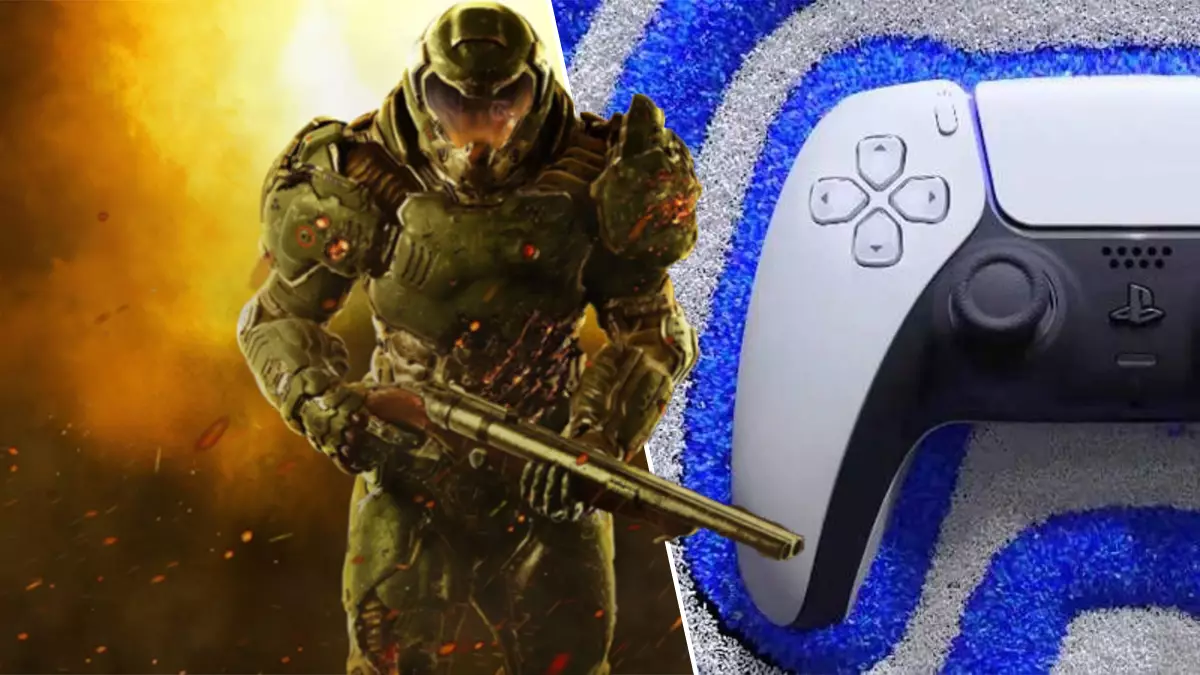
The PlayStation 5's DualSense is able to mimic the music that is going on in the game, proven in an astonishing experiment with the hardware.
The controller is a crafty piece of kit. Though it's larger than its predecessors, it's packing a punch with its immersive features that simply were not possible with the DualShock 4 and the PlayStation 4. One of these is the adaptive triggers that resist the player's actions. As a result, players will find themselves fighting to press the trigger while using weapons like a bow and arrow in the game, replicating what would be the actual tension in the string. Another is the haptic feedback, which through minute and controlled vibrations, represents various occurrences in games, from driving over mud compared to smooth tarmac, to the feeling of hailstones scattering over the ground.
It's this that has been modified to follow the beat of music. YouTuber Mennenth has supplied a handy video of what happens when they linked DOOM to the doohickey through their PC (of course, the PS5 isn't out in the wild yet). The instructions involved downloading a program called VoiceMeeter: this lets audio travel to two individual devices, which is very important. It's great to feel the beat in the DualSense, but you'll want to hear it through your speakers, too.
Advert
In fact, you're able to skip this step if you have a set of headphones. If you plug your headphones into the DualSense, it'll copy the beat of the music through the vibrations with no need for another program. This sounds amazing (pun not intended), but it has also opened players' eyes to the moments where the haptic feedback will not be helpful.
Our ears, our eyes, and our brains are a terrific team. The eyes see what is going on in the game, and send those signals to the brain. The ears hear what is going on in the game, and send those inferences to the brain. The brain then sorts it all out in a fraction of a second to process what is the most important thing that's going on right now. This is how you are able to bob your head to the soundtrack of DOOM and notice a demon is creeping along on your left, swivel and kerblam! Gone.
Some players are finding that connecting the game's music to the haptic feedback system inside the controller is overkill. Naturally, that's not including the vibrations that the game uses to alert the player of any other occurrences in the game, like heavy footsteps of an enemy, or a low health warning. "When holding it in your hands it doesnt [sic] make as much audible noise. Its [sic] much more of a quiet but strong and precise rumble," explained Menneth. "I tried it in another game that had a lot more background noise... And it wasnt as good. The haptics were constantly churning away in that situation so you lose specific feedback. That kind of shows the limitations of this method."
Advert
However, DOOM wasn't developed to make the most effective use of the haptic feedback of a console that hadn't been invented yet. Ergo, it is hoped that the new games that will be arriving for PlayStation 5 will do so, and we'll be getting our hands on some truly next-gen gaming experiences... literally.
Featured Image Credit: Harmonix Music Systems, Inc., Sony